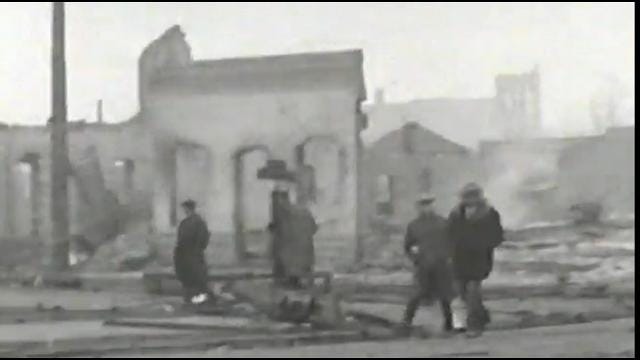Tulsa Meteorologist Sheds Light On Nation's Deadliest Tornado, 88 Years Later
It's known as the Tri-State tornado, and one Tulsa meteorologist has dedicated hundreds of hours of research to bring the mysteries of the deadly twister to light.Monday, March 18th 2013, 9:45 pm
Monday marked the 88th anniversary of one of the worst tornadoes in U.S. history.
It's known as the Tri-State tornado, and one Tulsa meteorologist has dedicated hundreds of hours of research to bring the mysteries of the deadly twister to light.
"Having the facts straight on a historical storm helps you have a good base for looking forward," said Steve Piltz, the meteorologist in charge of the National Weather Service in Tulsa.
On March 18, 1925, the deadliest tornado in our nation's history struck an unsuspecting swath of communities from Missouri, through southern Illinois and into Indiana. What has become known as the Tri-State tornado holds the record for the longest tornado path: 219 miles. Occurring before the era of modern weather technology, this record-setting twister has been shrouded in mystery, which is why the research done by Piltz is so important.
"It required visits to the damage path. We actually tried to visit anyone that would have been an eyewitness," Piltz said. "We looked at all the media accounts, scientific write-ups, Red Cross journals—those types of things. And, so it required lots of visits to Missouri, Illinois, and Indiana."
Piltz grew up in Murphysboro, Illinois, one of the communities devastated by the tornado, which occurred on an otherwise typical spring day.
"It's just that this thunderstorm, this super cell, stayed in what I would call a sweet spot for several hours, and it stayed there and more or less produced a tornado continuously for three hours," Piltz said. "It wasn't the lowest barometric pressure, it wasn't the fastest jet stream, just a lot of circumstances coming together."
It was those circumstances that Piltz believes created one unusually long-tracked tornado, versus a series of tornadoes from the same storm.
This debate continues within the meteorological community, but one thing that isn't under debate is its historical significance.
"It's one that we hope would never be repeated again, because we do build our buildings better, there is better early warning, there is better communications now," Piltz said." But we'll still see. As we know from a couple years ago now, we can still have hundreds killed in a spring from tornadoes, and it's still something that we have to work very hard to make sure people are safe."
Piltz hopes to have his collaborative research published in the Electronic Journal of Severe Storms Meteorology in April.
More Like This
April 15th, 2024
April 12th, 2024
March 14th, 2024
Top Headlines
April 25th, 2024
April 25th, 2024
April 25th, 2024












